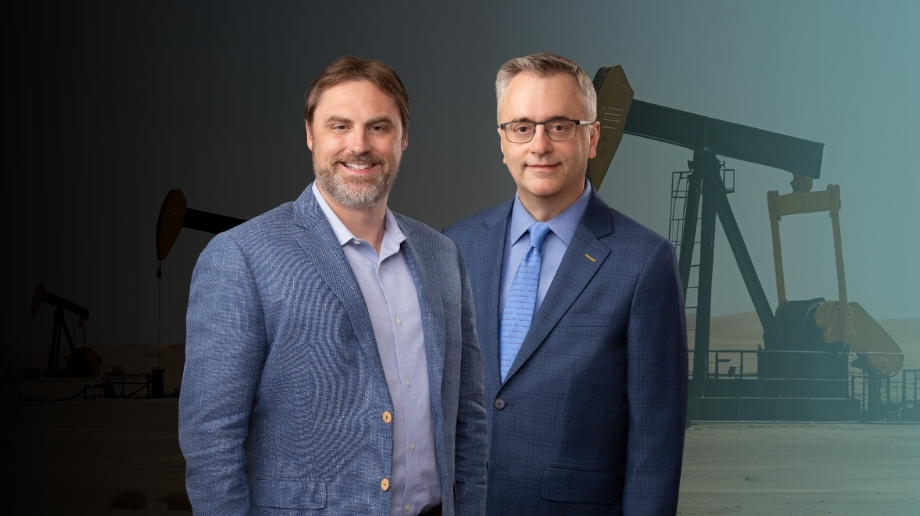Episode 2
OG Talks: Good Energy – Subsurface Easements & Regulations on Federal & Tribal Lands
In this episode, Co-owner Brad Gibbs sits down with Prof. Christopher Kulander, respected legal scholar and energy law thought leader, to explore recent legal developments regarding subsurface easements and regulations on federal and tribal lands.
Together, they provide an in-depth look into landmark cases like True Oil, Myers Woodward, and McGirt, offering insight into how these rulings have influenced land regulations and reshaping the energy landscape.
Transcript
[Music] good afternoon I’m Brad Gibbs welcome to another edition of good energy talks I’m here today with Professor Chris kolander and today we’re going to talk a little bit about um some federal cases their implications on ccus uh where we think that might be headed in Texas and then a little bit about some uh some recent happenings in Oklahoma as well so uh thank you for joining us again Chris so uh first we’re going to talk about the true oil case which is a case out of the uh District Federal District Court of Wyoming um this is a case having to do with uh subsurface easements and in that case um the issue there was whether a fee surface owner can grant a subsurface easement through Federal minerals without BLM approval now the reason this case is kind of interesting is because it has has implications uh broader implications for subsurface use generally um in Texas and many other places the surface owner is thought to have uh a fairly unfettered right to Grant subsurface use whether it’s a subsurface use agreement or uh poor Space Storage um and and various other uses and in this case at least when Federal minerals are involved it seems that the BLM might have a right to uh request or require an APD be acquired before granting any type of subservice Rights so this would be kind of a a push back in the other direction um one of the reasons I thought this case was interesting is because uh it reminded me of a split of authority in Texas that’s working its way up to the Supreme Court right now in fact it’s pending before The Supreme Court and that is uh the Myers Woodward case that was decided by the Corpus Christie Court of Appeals and the MCO case out of Bowmont in the 9s and uh uh I’ve invited Chris here today to tell us a little bit about these two cases yes well in ‘ 91 we’ll go back to that the um Mapco versus Carter case came out of the bont court of appeals and in that case we were dealing with who owns the poor space inside salt well what’s that salt is considered to be a mineral typically and of course as you know if you’ve ever dissolved salt in anything we all have it makes well salty water and you can make salt Caverns by pumping in water and then pumping out the salt water and the caverns inside the salt get bigger and bigger the question arises then who owns that pore space who owns those salt Caverns is it the surface owner or is it the mineral owner the general rule in Texas is that poor space unless the sing instrument says otherwise poor space belongs to the the surface owner but the Carter case is interesting because it’s suggested that no if the mineral if the if the POR space is inside a mineral if it’s inside the salt then the POR space belongs to the mineral owner fast forward to what I think it was 20 not 2022 the court out of Corpus Christi said in a rather harshly uh decided case they said no we’re just not going to we don’t believe that Belmont decided that right it doesn’t matter if the pore space is inside the mineral salt it belongs to the service owner unless the severing instrument says otherwise and so it’s one of these rare that you see in the mineral realm anyways splits between uh in in decisions uh between our court of appeals so it’ll be really interesting to see what the Texas Supreme Court says about Myers Woodward and if I recall correctly one of the uh uh facts that are in dispute here um or one of the I guess issues is if you as the salt extraction company kind of create uh or or uh um make the uh salt Caverns larger then should you have some heightened right to use lease and kind of have uh more um ownership over that Pore space as opposed to just naturally existing Pore space under the ground is that correct right it would seem like you conceptually as the Pore spaces get bigger from pumping in water and then pumping out the salt water as those poor spaces get bigger the Delta from the change in size from when it was to what you made it you would seem like you would have an argument that well that volume that we’ve increased but why wouldn’t that belong to me so I think this is right for a Texas Supreme Court case to come in probably a long one and they like to opine on these things um to explain where we’re at in the state and that really I think ties in with uh what’s going on up in Wyoming on federal minerals now in New Mexico unless the sing instrument says otherwise poor SP poor space belongs to the service owner by Statute not by case law and Texas conspicuously does not have a statute at least currently that that directly addresses poor space ownership but I think uh most um commentators would agree that Texas appears to be trending toward I believe what’s known as the American rule uh that says that uh the pore space is owned by the surface owner is that what you’re kind of seeing emerging yeah there’s a trend um it it’s a definitely a minority view you occasionally see it in the Appalachians uh in in placees maybe in Pennsylvania uh where they have number of different Estates like the subsidence estate but it I would definitely say the majority view is unless the saning instrument provides otherwise you can never forget that unless the provides otherwise the surface owner owns the poor space and that’s a great Point parties are obviously free to agree to any ownership that they prefer but these are uh default rules that that you will see um in the absence of an agreement and uh of course this is important because um this empty space these salt Caverns this poor space has a A Renewed value um or a value that nobody really saw coming um a few years ago uh and this has to do with uh carbon sequestration uh ccus activities um parties want to come in and and inject um and trap carbon in these uh poor spaces and so suddenly there’s a great deal of interest in in who owns what and and how these rights are eventually going to be parsed out so um kind of turning back to the federal context um there was a case a couple of years ago uh out of Oklahoma the Mur case um and uh I believe you wanted to chat a little bit about that today as well yes we don’t have much federal or American Indian Land here in Texas but north of us uh there’s a lot of tribal land and a fair amount of federal land in Oklahoma certainly west of us in New Mexico an awful lot of federal and American Indian Land there as well the mcgirt case was a closely decided 54 Texas Supreme Court case which provided that um ultimately that Congress was the one and only entity that could do away with American Indian reservations not the courts not the state courts certainly um and not the state legislature and that opened the door and again a hotly contested 54 case of much of Eastern Oklahoma still being under uh tribal Authority what’s interesting about the mcgirt case was it started off as a criminal case there was a a party uh who I believe was a tribal M that was charged with three serious crimes um it didn’t come out in the case what they were but the ultimate issue that came up uh in the Supreme Court was is this reservation still around or not it is and why we care in the oil and gas context is because we have to ask ourselves if the if the in almost entire eastern part of Oklahoma is still considered to be a tribal reservation does the state entity the Oklahoma Corporation Commission which is the Oklahoma version of The Railroad Commission or the Ohio Department of Natural Resources does it have the authority to regulate on American Indian Land as a very general rule state entities don’t have the right to uh apply jurisdiction on on Federal Land that’s the Bia Bureau of Indian Affairs through through the department of the Interior the Feds that do that so that mcgurt and and how that ripples out and how the fact that it’s a 54 case is really going to be uh an interesting thing to watch in the future so do you think that uh because that case was so narrowly decided that uh it will be potentially open uh for attack in the future I do um my experience with American Indian law having gone to law school in uh Oklahoma at OU is that it seems to be like a ship that just goes back and forth and there would be a very pro- broad Indian jurisdiction case and then there’ll be another case that narrows it considerably and it’s it’s American Indian law and how it ties in with oil and gas law obviously because there’s lots of oil and gas operations in these states that have American Indian reservations um is highly unpredictable and it makes it difficult for operators and lenders out there well I appreciate your Insight and thank you for joining us today um we wanted to us we selected these cases today to highlight um the fact that that our firm uh does practice across a number of states um we we practice on federal lands uh we practice obviously in Texas uh also Louisiana where ccus activity is really ramping up um particularly uh in light of of the recent uh Primacy that’s been granted there that gives them the right to regulate that at the state level um and uh uh we uh do our best to keep the industry at large um educated on what’s going on across the country because uh not only do we find it to be a great deal of interest but we uh also find that having sort of a national perspective uh makes us better oil and gas attorneys so thank you very much for joining us today
[Music]
Featured in this podcast
Get expert legal guidance today
Contact us today to discuss your legal needs in oil, gas, and mineral development.


